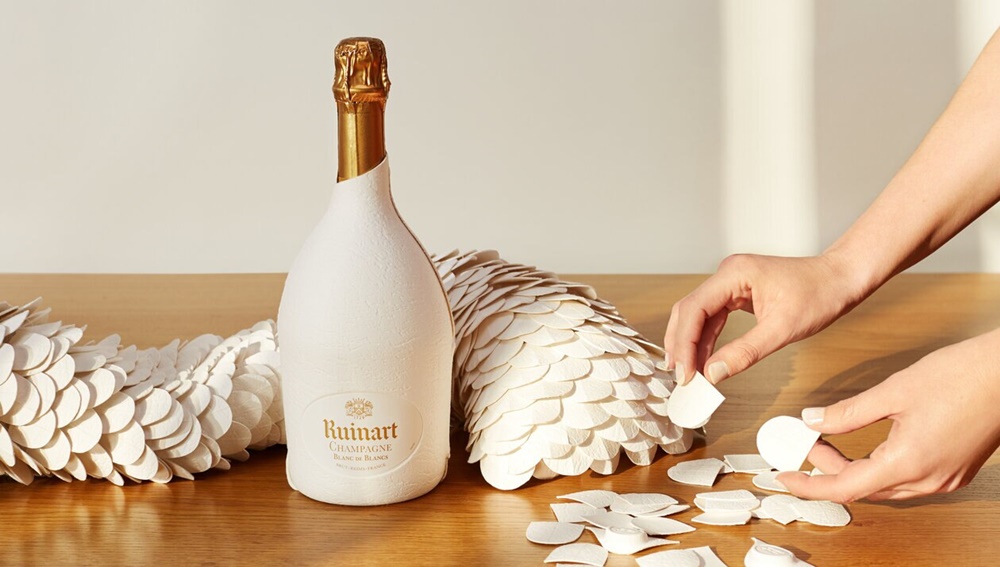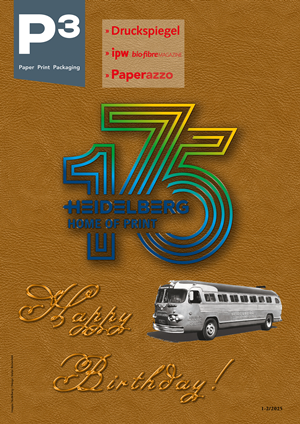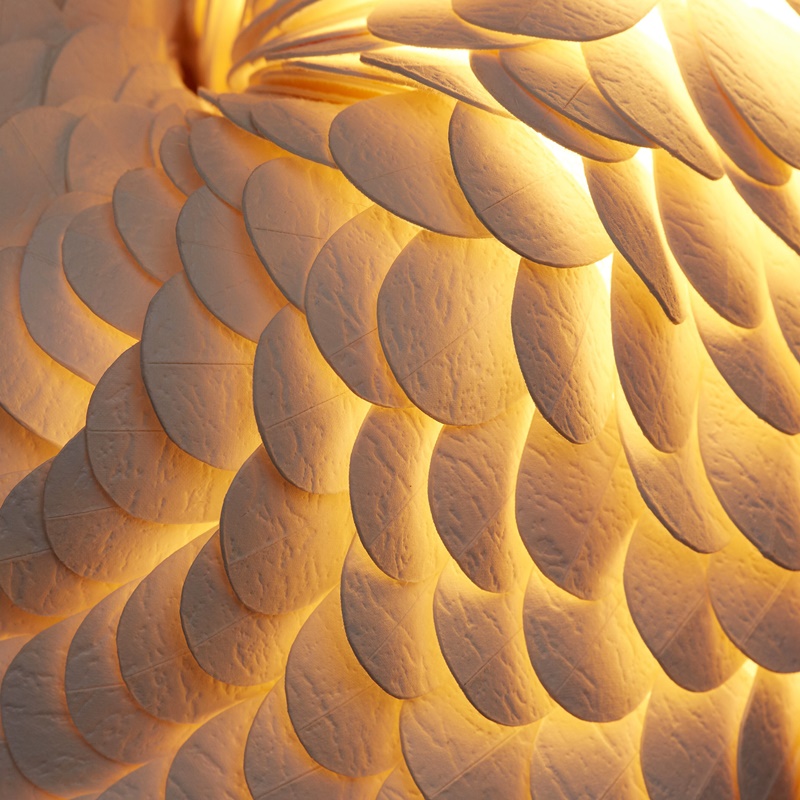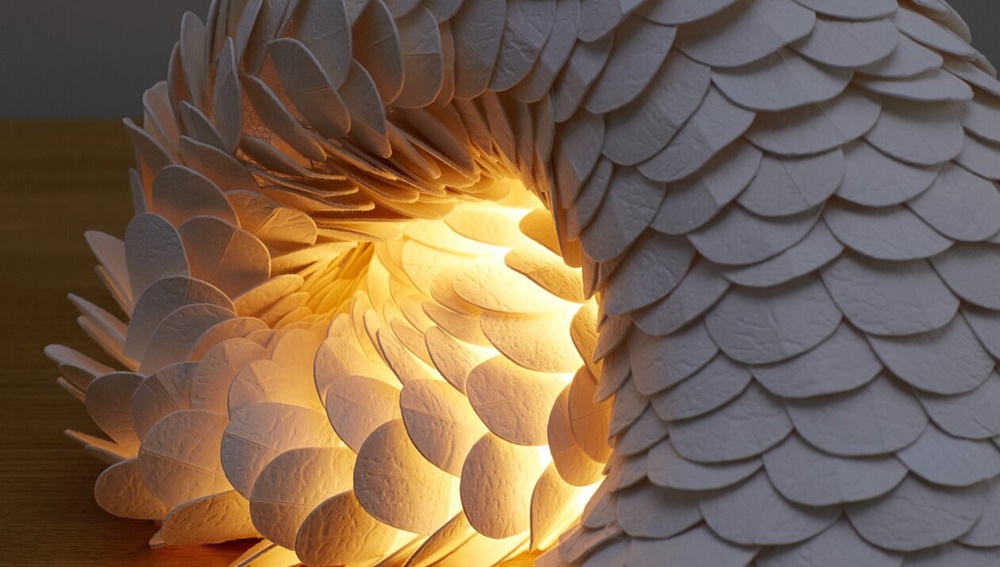P3 3-4/2021 en
Shining a Light
The Beauty of Paper and Art Coming Together
Packaging

Paper designer Anne-Charlotte Saliba demonstrates her artistic craftsmanship with the first eco-responsible packaging for champagne brand Maison Ruinart.
The new packaging for Maison Ruinart champagne, developed in a collaboration between Ruinart, James Cropper and Pusterla 1880, is a great example to illustrate how a brand with a rich heritage, a carefully selected paper, innovation and imagination can yield a product that is more than just the sum of its parts. In the following article, James Cropper packaging lead Tricia Hartmann describes how one of the papermaker’s disruptive packaging designs became a work of art.
Paper designer Anne-Charlotte Saliba demonstrates her artistic craftsmanship with the first eco-responsible packaging for champagne brand Maison Ruinart.
Following two years of research and design, our work with Pusterla 1880 was made a reality when we created the first eco-responsible packaging for champagne brand Maison Ruinart using our COLOURFORM™ innovation. Like a ‘second skin’ made of paper, the champagne case follows the lines of the Ruinart bottle’s emblematic curves and allows the integrity of the Maison Ruinart flavour to be preserved until tasting. The raw and sophisticated texture was inspired by the walls of Crayères, the Maison’s historic chalk-pit cellars in Reims.
The ‘second skin’ casing offered a packaging solution that was nine times lighter than the previous box and as such, enabled Maison Ruinart to reduce its carbon footprint by 60%, compared to the current generation of Ruinart boxes being used at the time. The ultra-light case is a mono-material design with genuine sustainability credentials, crafted from responsibly sourced natural wood fibres. Revolutionising the gift-box and cases market, the eco-designed packaging uses zero plastic and is 100% recyclable.
And the green credentials of the ‘second skin’ continue as Maison Ruinart invited paper designer Anne-Charlotte Saliba to demonstrate with her artistic craftmanship, as part of the Ruinart Studio upcycling art project. Inspired by the wide exploratory field offered by paper and how it plays with light, the French designer meticulously worked to sculpt the second skin case and sublimate it. First drawing scalloped shapes on the paper case, she then cut them out and finally assembled the pieces one by one by sewing. Her creativity and vision saw the case upcycled and transformed into a beautifully crafted night-light. Now known as the ‘third skin’, this piece of artistry has given our game-changing packaging creation a new lifetime use.
Anne-Charlotte Saliba is an independent designer and craftswoman, taking her inspiration from nature to create light fixtures and bas-reliefs. After finishing her studies in applied arts, environmental design and interior architecture, she quickly specialised her work in paper. The paper material she uses comes from sustainable forests, testifying of an eco-design desire, that echoes the environmental challenges that drive Maison Ruinart on a daily basis, and ourselves here at James Cropper. Anne-Charlotte is an artist who likes to work on material that already has a story by appropriating it and by bringing it back to its essence to tell something new and to give it a fresh look and utility, so the partnership on Maison Ruinart second skin with Anne-Charlotte’s artistic preferences was a perfect fit.
Maison Ruinart opened the Ruinart Studio to support emerging contemporary artists from all around the world. The programme commissions young talents, from a stylistic diversity, to bring an original and creative perspective on the Maison’s universe, thus encouraging the constant renewal of artistic creation. The ‘third skin’ by Anne-Charlotte is the first iteration that blends together creativity and sustainability and we’re delighted to be part of the story.








